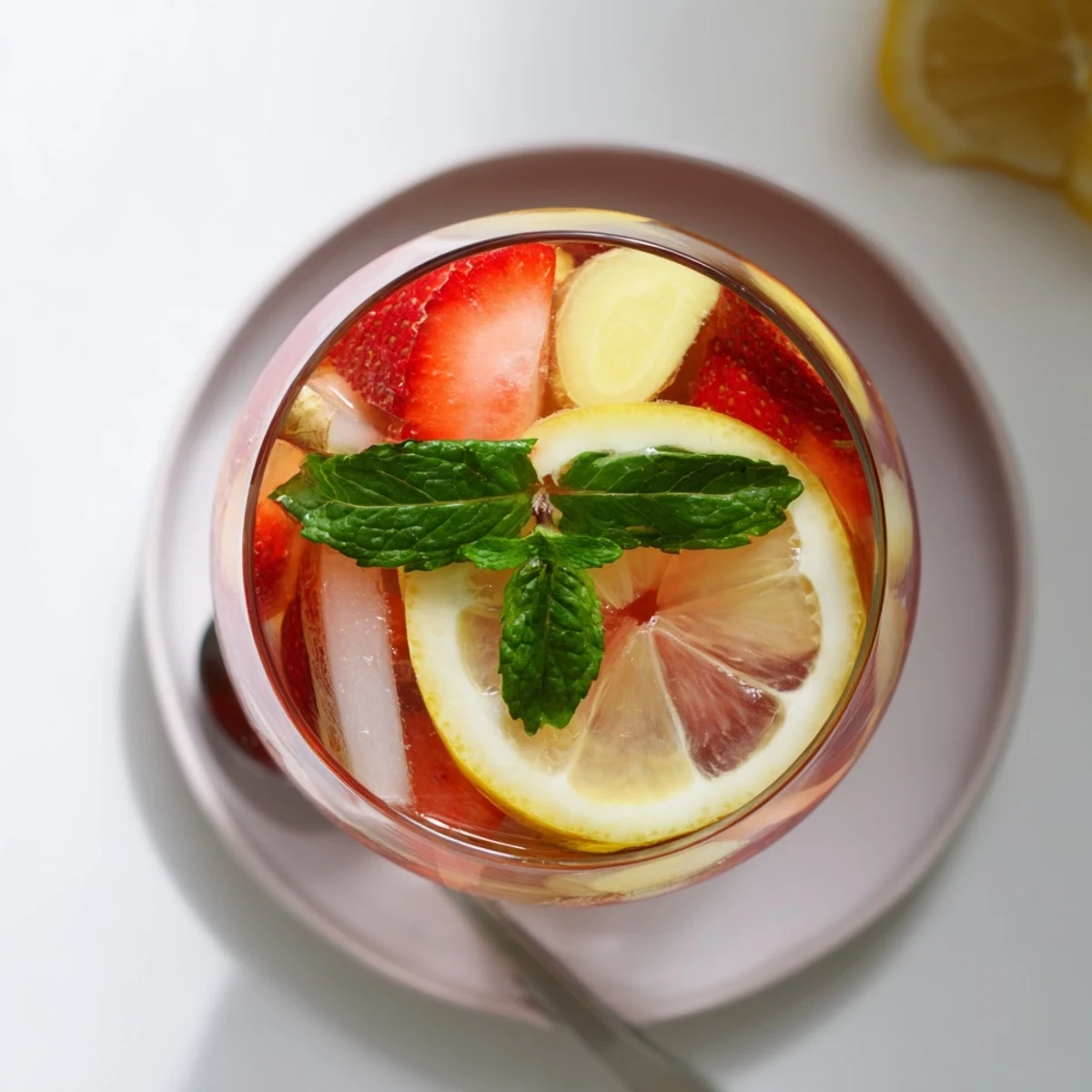 Save
Save A refreshing collection of naturally fermented beverages inspired by kombucha, perfect for enjoying as healthy, alcohol-free mocktails with complex flavors and gentle fizz.
I first started brewing kombucha-style drinks at home to enjoy a flavorful, fizzy alternative to soda. Experimenting with fruits and herbs made every batch exciting, and sharing these mocktails has become a favorite kitchen ritual.
Ingredients
- Filtered water: 2 liters, for brewing the tea base
- Black or green tea: 8 bags or 2 tablespoons loose-leaf, for authentic kombucha taste
- Granulated sugar: 200 g (1 cup), feeds the fermentation process
- Kombucha SCOBY or starter liquid: 1 SCOBY or 200 ml store-bought kombucha, jump-starts fermentation
- Fresh berries: 100 g, as a flavoring option
- Lemon or lime: 1, thinly sliced, for a citrus twist
- Fresh ginger: 1 small knob, sliced, adds warm spice
- Fresh mint or basil: 1 sprig, for herbal notes
- Fruit juice: 2 tablespoons (e.g., pomegranate, cherry, apple), adds acidity and color
- Dried hibiscus petals: 1 tablespoon, for tartness and color
- Cinnamon stick or whole cloves: 1 stick or 3–4 cloves, for warm spice notes
Instructions
- Brew the tea:
- Boil 2 liters of filtered water. Add tea bags or loose-leaf tea and steep for 10 minutes. Remove tea bags or strain out leaves.
- Add sugar:
- While the tea is hot, stir in the sugar until fully dissolved. Let the sweetened tea cool to room temperature (important: hot liquid can kill the SCOBY).
- Combine and ferment:
- Pour the cooled sweet tea into a large, clean glass jar. Add the SCOBY and starter liquid (or store-bought kombucha).
- Cover and store:
- Cover the jar with a clean cloth or paper towel secured with a rubber band. Store at room temperature, away from direct sunlight, for 5–7 days.
- Check and taste:
- After 5 days, taste your brew daily. When it's tangy and slightly fizzy (but not overly sour), it's ready for the next step.
- Flavor and bottle:
- Remove the SCOBY and 200 ml of kombucha to use as starter for your next batch. Add your chosen fruits, herbs, or spices to the kombucha.
- Bottle and carbonate:
- Pour into clean bottles, leaving about 2–3 cm headspace. Seal tightly. Ferment at room temperature for 1–3 more days for extra carbonation.
- Refrigerate and serve:
- After desired carbonation is reached, refrigerate bottles. Strain out solid flavorings before serving.
 Save
Save Sharing these fizzy mocktails at family gatherings never fails to spark excitement. Watching everyone try new flavor combinations is a tradition we all enjoy.
Required Tools
Large glass jar (2–3 liters), fine mesh strainer, funnel, clean glass bottles with tight lids, measuring cups and spoons help you brew, strain, and bottle your kombucha-style drinks with ease.
Allergen Information
Contains caffeine from tea, and may contain traces of gluten if using flavored teas. Always check labels on added ingredients to avoid cross-contamination with allergens.
Nutritional Information (per serving)
Calories: 45, Total Fat: 0 g, Carbohydrates: 11 g, Protein: 0 g
 Save
Save Enjoy discovering your favorite flavor combinations and sharing naturally fizzy, delicious kombucha-style drinks. Happy brewing!
Recipe Guide
- → Can I use other teas besides black or green for brewing?
Yes, you can experiment with oolong or white tea, but avoid teas with oils or flavor additives as they may affect fermentation.
- → How do I know my kombucha drink is ready to bottle?
Taste daily after day five; when it becomes tangy with mild fizz but not overly sour, it's ready for flavoring and bottling.
- → What flavor combinations work well for these mocktails?
Try ginger-lime, berry-mint, apple-cinnamon, or mix your own using herbs and seasonal fruits for creative infusions.
- → Do I need a SCOBY for homemade fermenting?
You can use a SCOBY or starter liquid from unflavored store-bought kombucha. Both provide necessary cultures for fermentation.
- → How do I achieve more carbonation in the final drink?
After bottling, ferment at room temperature for up to three days before chilling in the fridge for extra fizz.
- → What containers are best for fermenting and bottling?
Use large glass jars for fermentation and clean glass bottles with tight lids for bottling. Avoid metal containers.